“a (im)possible relevance”
The Collection of Mal and Lizzie Brow
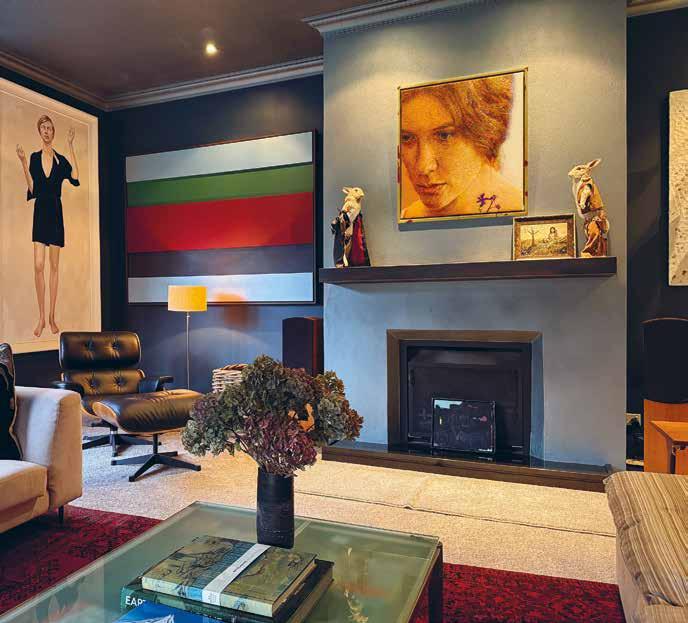
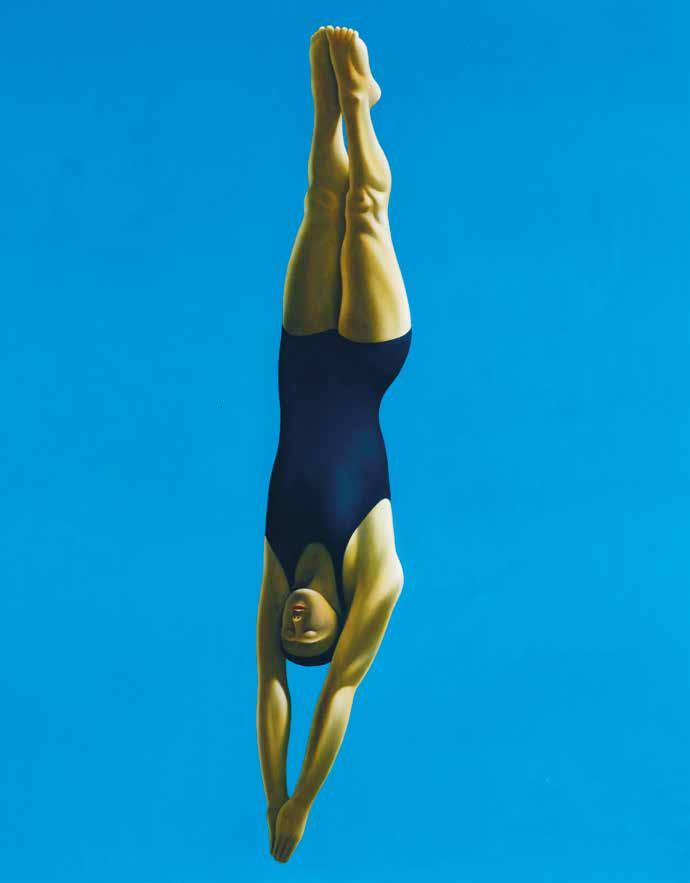
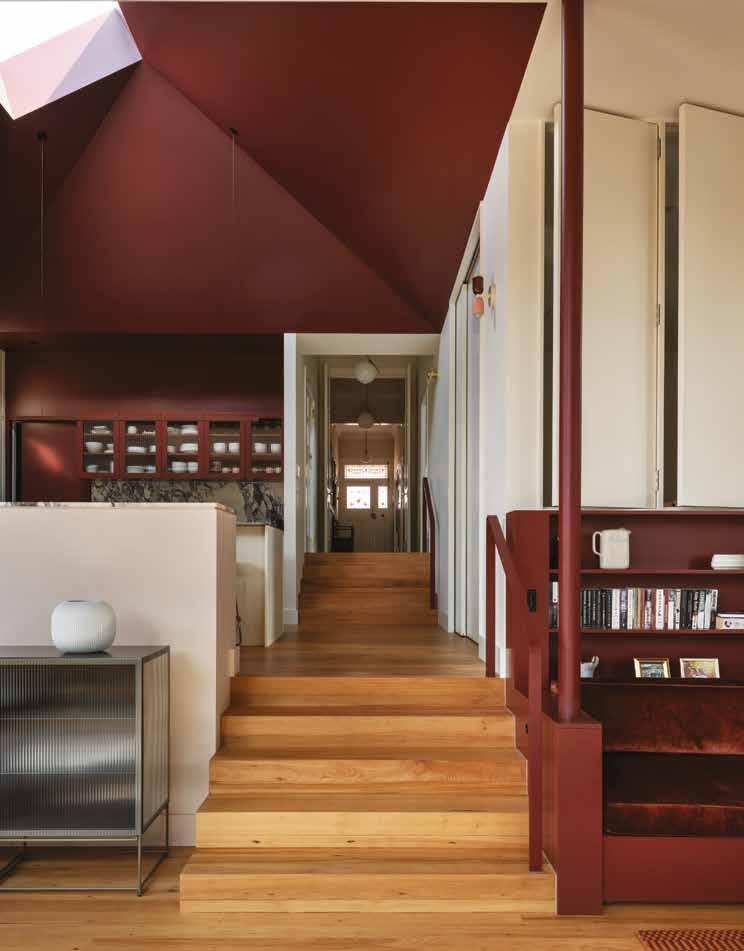
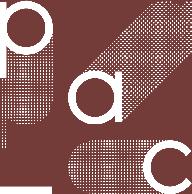


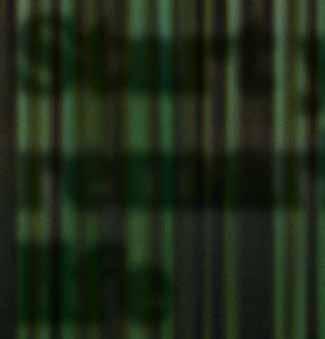

















Hasselblad X2D II 100C delivers true-to-life colour powered by the Hasselblad Natural Colour Solution with High Dynamic Range (HNCS HDR). The new AF-C mode, subject detection and 10-stop stabilisation work together to deliver sharp images with speed and precision. And with Phocus Mobile 2 streamlining your workflow, let inspiration flow and exceptional images follow naturally.



















Together with Creative New Zealand, Christchurch Art Gallery Te Puna o Waiwhetū, and Starkwhite Gallery, the Patrons of New Zealand at the Venice Biennale invite supporters to join us in Venice for Fiona Pardington’s Taharaki Skyside in 2026.
The Vernissage programme is 4–8 May 2026
Please contact Leigh Melville leigh@artandobject.co.nz or Claire Chamberlain chamberlainarthistory@gmail.com






Charles Frederick Goldie
Harata Rewiri Tarapata conté crayon on paper
signed and inscribed Haere Ra! Kia ora, Tōu hoa
175 x 135mm
Provenance: From the estate of David Collinson. Private collection, Auckland.
$65 000 – $85 000


Sale Total: $5 005 758

New record prices at auction for the work of Ralph Hotere, Robert Jahnke, Llew Summers and John Reynolds.
$1 003 890 raised for the Auckland Art Gallery Foundation Endowment Fund.

Art+Object is delighted to announce a sale dedicated to one of the country's pre-eminent object makers, Greer Twiss (1937–2025). With a celebrated career spanning over six decades, Twiss is a crucial figure in the development of 20th Century sculpture and image making in Aotearoa New Zealand.
Born in Auckland, Twiss was a student at Auckland Boys Grammar School and later became Head of sculpure at Elam School of Fine Arts between 1974 and 1988. His public sculptures such as Karangahape Rocks (1969) have made him one of the country’s most visible and loved sculptors.
Art+Object will present a number of the artist’s works from his own collection, alongside works by his contemporaries from his personal collection.

Continuing our tradition of offering the very best in single vendor collections, it is a wonderful pleasure for Art+Object to bring to the market “a (im) possible relevance” the collection of Mal and Lizzie Brow.
Mal is known to many in the art world as a collector, consultant, former gallerist and philanthropist. Together with his wife Lizzie, they have been an integral part of the Wellington art scene for decades. Over that time they have amassed a significant collection of contemporary art by some of New Zealand’s most exciting and audacious artists. Their family home in Wellington provided a rich backdrop for the collection and stands as testament to their deep commitment to local art and artists. For over a decade Mal operated the 30 Upstairs Gallery in Courtney Place, a space which provided invaluable support to many emerging and established artists. As a non-profit exhibition space, 30 Upstairs celebrated artists and provided an opportunity for them to exhibit and build reputations with no financial expectations.
There are many prominent names in this collection, but it is also a celebration of the art and artists that have enriched the Brow family’s life. With their children having left home, it is now time for Mal and Lizzie to explore a new chapter and this presents an opportunity for these artworks to find new homes.
We look forward to seeing you in the rooms to celebrate “a (im) possible relevance”.
Warm regards
Leigh Melville
Page 1: Michael Smither, The Diver, 1973 (lot 41)
Back cover: Jon Campbell, Shit Yeah, 2011 (lot 17)
ART + OBJECT. 3 Abbey Street, Newton, Auckland. PO Box 68345, Wellesley Street, Auckland 1141 Tel +64 9 354 4646, free 0800 806 001, fax +64 9 354 4645, info@artandobject.co.nz, artandobject.co.nz
Instagram: @artandobject, Facebook: Art+Object, Youtube: ArtandObject

Auction
LIVE AUCTION (Lots 1–90)
Wednesday 22 October at 6pm
3 Abbey Street, Newton, Auckland
ONLINE ONLY AUCTION (Lots 91–196)
Thursday 23 October at 6pm bid online at live.artandobject.co.nz
Preview
Wednesday 15 October, 5pm–7pm
3 Abbey Street, Newton, Auckland
Viewing
Thursday 16 October
Friday 17 October
Saturday 18 October
Sunday 19 October
Monday 20 October
Tuesday 21 October
Wednesday 22 October
Thursday 23 October 9am–5pm 9am–5pm 11am–4pm 11am–4pm 9am–5pm 9am–5pm 9am–1pm 9am–1pm


There can be few terms more erroneous in our industry than an auction house using the term ‘curated’. Curator’s curate, auction houses auction. Nonetheless, the Mal and Lizzie Brow Collection does provide us with a window upon which an auction catalogue and viewing can, more closely than usual, examine the nexus of art, politics, society and humanity. “A (im)possible relevance” seeks to ask the question as to how relevant art and art collecting can be in these unprecedented times of global instability, cost of living crises, climate change and increasing conflict.
I first got to know Mal and Lizzie Brow and their extraordinary collection in 2012. Art+Object had been going for four or five years, and we were incredibly privileged to be entrusted with the disbandment of the Les and Milly Paris collection, arguably the finest private collection of contemporary art in Aotearoa-New Zealand. It represented a real ‘moment’ for us and required a space to exhibit the collection prior to its sale, in the city of its origin. Importantly it needed to be somewhere ‘neutral’. Mal, himself a photographer, had recently opened ‘30 Upstairs’ in Courtenay Place, Wellington. A uniquely non-profit gallery and project space where he could exhibit his own photographs, show works from his own collection and offer an artist-in-residency space for emerging artists. It was the perfect space for us.
The Mal and Lizzie Brow collection unquestionably starts in a safer place than where it ultimately ends up heading. There are major Modernist paintings acquired early on by Tony Fomison, Michael Smither, Ralph Hotere and Don Driver, but the collection’s real heft, I believe, resides in the key period of contemporary Aotearoa-New Zealand art practice produced around the turn of the century and the early 2000s. For me, and undoubtedly this is symptomatic of my own age and subjectivity, this is a key period in the evolution of the visual arts in this country in recent times. It perhaps represents a moment when ‘distance ceases to look our way’ and
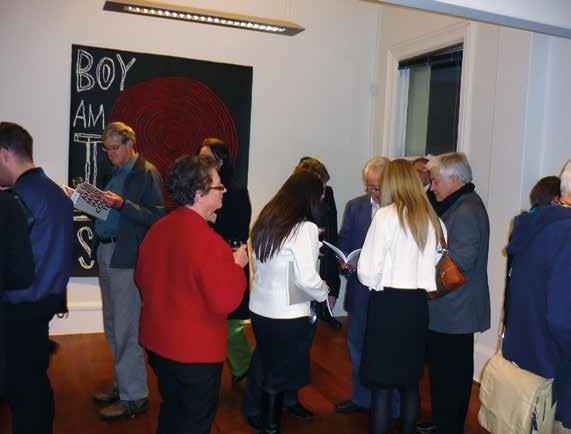

more contemporary artists begin to head abroad to have their work considered in a global rather than local context.
The collection is also notable for the manner in which the Brow’s have collected several artists in depth, forming significant collections within their collection of artists whose reputations continue to rise. These include Tony de Lautour, Francis Upritchard, Suji Park, Kushana Bush, Séraphine Pick, Michael Harrison, Michael Parekōwhai, Andrew McLeod, Gavin Hipkins, Saskia Leek, Rohan Wealleans and several more.
Photography is a key interest of Mal’s especially and forms an important component of the collection with major works by local photographers such as Peter Peryer, Marti Friedlander, Ans Westra, Andrew Beck and Gavin Hipkins enhanced by their presentation alongside international heavyweights such as Ansel Adams, Edward Steichen and Henri Cartier-Bresson.
In more recent times they have collected works by many Australian practitioners including Ricky Swallow, Laith McGregor, Diena Georgetti, Hany Armanious, Kathy Temin and many more.
The Mal and Lizzie Brow Collection is a collection without stylistic, geographical or media barriers. The Brow family are relocating to Australia in the coming months. We wish them all the best for the move and hope they continue their outstanding and considerable support for the work and careers of contemporary artists here and abroad.
Ben Plumbly





































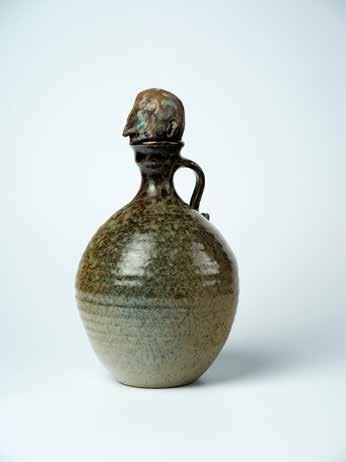
34 Francis Upritchard, Lamp, wood-fired stoneware and electrical fitting (2008). Provenance: Purchased from Hamish McKay Gallery, Wellington, 2008. $20 000 – $40 000
35 Francis Upritchard, Blue Woman with Green Shawl, 2011, watercolour, signed verso, 345 x 245mm. Provenance: Purchased from Hamish McKay Gallery, Wellington, 2015. $2000 – $4000
36 Francis Upritchard, Man Urn, earthenware and modelling material, 270 x 140 x 140mm. Provenance: Purchased from Ivan Anthony Gallery, Auckland, 2008. $7000 – $12 000
The Upritchard grouping of four works tracks the artist’s career from her craftmeets-museum Walters Prize win in 2006, through to more recent figurative sculptures with emblematic gestures. Her early works seem immediately familiar through their handcrafting of everyday op-shop objects and their domestic scale. But they remain mysterious, almost mystical, as if they have been rescued from a pagan ritual and then outfitted for museum display.
The small Man Urn, 2007, features a found c1970s ceramic vessel, to which Upritchard has fashioned a head-piece stopper. We daren’t lift the lid on this amusement, as the artist reminds us that the canopic urns in ancient Egypt held embalmed internal organs of the dead.
With Lamp, 2009, Upritchard offers complete domestic familiarity. But…on this ceramic lamp base the artist places a light-retardant ceramic shade, brown, fusty and
dusty. A small gargoyle face is politely fashione d into the side of the shade to give a definite feeling of unease for anyone brave enough to read by the light of this lamp in a domestic living room setting. So, function is quashed, and meaning is left open to construe. Similar lampshade works from this series were part of Upritchard’s celebrated 2009 Venice Biennale presentation.
In recent years, the artist has moved away from vitrine and plinth presentations of refashioned found objects and mock artifacts, to examining the possibilities of small figurative watercolours and sculpture. When you consider the rich British and colonial tradition of bronze sculpture or the studied marble perfection of Greek statuary in the Acropolis Museum at the Parthenon, Upritchard’s take on the figure is uploaded on personality and anti-heroic gesture. From the same Venice period of mono-coloured figures, the lurid yellow female of Palm, has a distinctly Woodstock feel full of free-wheeling music love and peace with the outstretched hand gesture ironically saying no (to drugs? To Vietnam? To the National Guard?). The figure points to a failed flower-power 1960s Utopia that politics inevitably smothered. Even with the support of hidden armatures, the modelling material is pushed into lanky limbs that curiously make gesture more important than mass.
Yet Upritchard can work with mass. On a vast architectural scale, and this time in blue and violet, we can currently see Here Comes Everybody, 2022, a group of towering bronze figures commissioned for the Welcome Plaza for the new building at the Art Gallery of New South Wales. Upritchard loves to play with dramatic changes in scale. After seeing these giants, the watercolour Untitled makes a wonderful gentle counterpoint with a (this time blue) pixie-like figure clothed in a green mantle. The clothing is more like a covering, a drapery, as the artist converses with us on skin-deep appearances. This is watercolour that you can see through, and on a scale that you can warm to.
Peter James Smith


The history of female portraiture is lined with stylistic fashions of the day to invite the male gaze. As fashions changed, so did stylistic conventions. But one artist whose images have remained as fresh and contemporary as the day that they were painted is Hans Holbein the Younger, who worked in the court of Henry VIII, King of England. His c1528 painting of A Lady with a Squirrel and a Starling in the National Gallery in London, still entreats us with its meticulous verisimilitude, with the figure’s mysterious dramatic clothing and strong female presence, with the animal attendants, and with the surreal jade/blue flat coloured ground behind the figure.
This is a work that Liz Maw could have painted. Perhaps she did? Because her works to date follow a similar stylistic trajectory of figure and ground—except Maw is a female painter who advocates for the inner singular strengths of her female subjects, while Holbein would have needed to impress his king (who sent him on a mission to paint Anne of Cleves, who Henry desired, later married, with much later regret).
The Anne of Cleve’s portrait made Henry fall in love. He was a fan. And fandom is at play with Liz Maw’s portrait Francis Upritchard, 2010. Maw paints New Zealand women that she admires using a blend of high art and low art, cross dressing between mediaeval religious icons and 1970s record sleeves. Her subject, Upritchard, is a New Zealand artist who has made good in London—after her Walters win in 2006—with her sixth solo presentation at Kate MacGarry and a memorable show of draped figurative sculptures at the Barbican. Maw paints her contemporary females with fastidious attention to surface detail. The oil paint is applied like tempera, carefully, as if she was implanting gold leaf into an iconic surface. The careful skin tones take time. The result is a full-length portrait, that is mysteriously documentary rather than sensual. The figure has an inner glow, emphasised through the eyes that are filled in like those of a Greek God statue rescued from the sea. Are they still waiting to be filled with kiwi paua? Just like Holbein’s Lady with a Squirrel… the area behind the floating figure is flatly rendered, and the black clothing seems to be placed on the figure, rather than the figure being dressed in the clothing. In Holbein’s Lady, the figure is oddly cloaked in a cross between a white mink cap and a monk’s habit. Maw creates an Upritchard pose for her subject—that is, like one of Upritchard’s mysteriously dressed figures with elongated angled limbs. There is no desire to mimic reality. The overall effect is an abstraction, the making of the unreal from the real. This has the effect of drawing in the beholder (and here we mean both men and women) to look harder, to work harder on processing the image. A human is a complicated thing to paint and is not to be appraised at first glance. Henry would be disappointed that the waiting-to-be-filledin eyes have overpowered his gaze.
Peter James Smith



“Stepping up to the painting, I found myself on the edge of a blue-black void, a space whose colours suggested some time before or beyond day or night…”
— Shane Cotton
This painting comes from an exhibition titled “Māori Gothic” at Hamish McKay Gallery in 2006. It belongs to a series of works which Cotton made in the first decade of this century which were steeped in history. Searching through the imagery which floats in the dark surface here we find a winged goblin, god sticks, bird silhouettes, a listing tall ship, a bullseye and a machine gun. Symbols portending doom, perhaps?
As Justin Paton explains in the catalogue for the exhibition of the same name, “The hanging sky is a term from Māori cosmology, describing a sky draped down to meet the edge of the earth through which spiritual voyagers can pass.” The Māori word for blueness, kikorangi, joins together the words for sky and flesh, and at the centre of this work is the likeness of Ngāpuhi chief Hongi Hika, an ancestor now gone from the earthly realm of the flesh to the spiritual world of the heavens. Cotton’s image is based on the 1814 depiction of Bust of Shunghee, a New-Zealand Chief, reproduced on the cover of Missionary Papers, the journal of the Church Missionary Society, which is itself a two-dimensional representation of the wooden self-portrait which Hongi carved from a fence post at Church of England cleric Samuel Marsden’s Parramatta farm. Marsden said: “I wanted his [Hongi’s] Head to send to England, and he must either give me his Head, or make one like it of wood”. Marsden sent taonga to England as gifts to the Church Missionary Society (CMS) with the aim of raising money to establish a New Zealand mission station.
Seven years before his visit to Sydney, Hongi Hika had been involved in a skirmish at Moremonui north of Dargaville be tween Ngāpuhi, and the Kaipara branches of Ngāti Whātua, Te-Uri-o-Hau and Te Roroa iwi. Ngāpuhi, who had muskets but were slow to load them, were ambushed at sunrise as they sat down near the river mouth to eat. They quickly withdrew. The battle is known by two names, Te Haenga o te One (The Marking of the Sand), and Te Kai-a-te-Karoro (The Seagulls’ Feast) because a line in the sand was drawn beyond which the Ngati Whatua weren’t to pursue the Ngāpuhi, and Ngati Whātua also didn’t want to consume all of Ngā Puhi’s mana, so some bodies were left on the sand for the seagulls. Hongi lost two brothers and his sister, Waitapu, who sacrificed herself to save Hongi and ensure the survival of their family line. Her name means sacred water and is lettered vertically in Cotton’s composition, with the final letter, U, airbrushed into obscurity. Losing his sister affected Hongi greatly, and drove him to seek utu or revenge on those responsible in a series of battles which became known as The Musket Wars.
Linda Tyler

Painted when the artist was 35 years old, Diver is a consummately executed Smither work. By this stage he had removed all signs of painterly gesture from his work, which appears polished with an immaculate surface. Tightly framed, with the subject isolated, enlarged and centred in the painting as if viewed through a telephoto lens, it is as arresting in its treatment of the form as it is dynamic in its composition. Modelled by strongly direction light coming from an unseen source to the right, the figure appears as if sculpted. In conversation with writers Jim and Mary Barr in 1984, Smither remarked “I’ve always treated oil paint like a modelling clay…it’s not a fluid medium, it’s a plastic medium.” The 1970s was a period in which the artist was driven to simplify his approach, leading to compositional reduction and a clear focus on form. Tension continued to characterise his paintings.
As a figurative artist continually working with the human body, Smither became fascinated by mass media publication of sports photography showing athletes in action. By the 1970s, cameras had developed to have motorised shutters which could take multiple images per second, capturing every stage of the action in a game, race or performance. Reproduced in black and white or colour, these high-speed freeze frames were compelling in their ability to stop time, making movements that happened too fast to be properly appreciated by the human eye eternally enduring. Smither appropriated these found images to construct his paintings, noting that he “…never believed in the eye of the artist having anything to do with the way a camera does things. To me you walk around something when you are going to paint it and see if from all angles.” Here the silhouetted form epitomises that three-dimensionality, appearing like a spindle suspended in mid-air, human but curiously otherworldly.
Diving was included in the Olympics for the first time in 1904 with women taking part from 1912, typically catapulting from platforms elevated 10 metres – the height of a three-storey building – above water. Imagine the potential for damage as soft human bodies hit the hard water at around 50 kilometres pe r hour. Here, Smither depicts the female diver cutting through the air like a knife, engrossed in a straight dive with her eyes closed. It is a just an instant when she has surrendered to gravity, and she stretches out her body, arms and legs to minimise resistance. He exaggerates her androgyny, with a rubber cap covering her hair, and streamlining her figure to make it seem even more aerodynamic. Her face appears unreadable as if in a dream state or in prayer, about to hit the water and have a rude awakening.
Linda Tyler
Everybody knows The Strange Case of Dr Jekyll and Mr Hyde – or do they? The tale, written by Robert Louis Stevenson during a series of fever dreams in Bournemouth in 1884, is told from the point of view of a lawyer investigating the disappearance of his old friend, Dr Henry Jekyll. The body of another man, Edward Hyde, draped in Jekyll’s clothes, has been found dead on the floor in the doctor’s laboratory. There is a letter from Jekyll, explaining all – or all that can be explained. The gist of the matter, which everybody knows, is that Jekyll and Hyde, while different personalities, inhabited the same body. Jekyll used to transform himself chemically into Hyde to satisfy various illicit desires; and found, to his horror, that the transformation, over time, became permanent. Hence the suicide.
Tony Fomison’s version of the diabolical pair is, unusually, a portrait of a single man in which, we assume, both persons are present in the image. He is shown head and shoulders, in three quarter profile, looking directly out of the picture at us. The right side of the canvas is painted a dark metallic green, reminiscent of the popular Victorian wallpaper coloured thus, using Scheele’s green, a pigment containing arsenic, sometimes with fatal results. That same green seems to underlie, or rather pervade, the ochre pigments used for the face. The whites of the eyes are brilliant, as is the same white used to make up the two triangles of the man’s shoulders – resembling the points of the collar of a football jersey. Maybe even an All Black jersey.
Jekyll was a ‘large, well-made, smooth-faced man of fifty with something of a slyish cast’. Hyde was younger, crueller and is usually depicted as hairy, even apelike. Fomison’s version does look smooth-faced and fif tyish; however, his features are not English but Polynesian, and the set of the mouth and the eyes glittering below heavy, frowning brows suggest not just hostility but imminent violence. The nose, bulbous, beak-like, slightly rubicund, also transmits aggression. This is a man, you feel, whose anger is so great he is ready to kill.
But why that anger? And why does the portrait give you a sense that the anger is somehow justified? This is the face of a man who has been abused and betrayed and intends to take his revenge – upon all of us. You might assume it to be a generic portrait of an indigenous person who has suffered grievously from the depredations of colonialism. Yet the title makes such an identification problematic. The essence of Jekyll and Hyde is the co-existence of two personalities in one body; here we seem to have one individual, Jekyll, giving us the external appearance of the man and the other, Hyde, revealing his character. The composite person is, you might say, the alter ego of the smiling, happy-go-lucky, good-natured Polynesian chap of Pakeha legend.
Thus, and typically, Fomison complicates what at first appears straightforward. He began the work in January 1984 but it isn’t clear when he finished it. He painted other figures from literature in the 1980s, including Captain Ahab from Moby Dick (1981) and the eponymous Don Quixote from Cervantes’ great book. That portrait was in progress when Phil Clairmont committed suicide in May, 1984 and was, Fomison wrote, ‘finished off’ with him in mind. Dr. Jekyll and Mr. Hyde might have a personal reference as well: Tony Fomison was himself an ambivalent char acter who could switch from anarchic clown to malevolent adversary in the breath of a moment. Here it is as if, through his subject, he is watching us to see if we, too, are dual-natured. As surely we are.
Martin Edmond


Andrew McLeod is a consummate painter in a period that has seen painting decline as the main medium of new art. He has never strayed from oil painting, with the odd excursion into digital printmaking, often jostling abstraction with figuration. His handling of paint shifts from between smear and gesture to the microscopic and exquisite rendition of detail. His oil paint is more scumbled, not glazed, blended or modulated in tone and colour. Nevertheless, the stabs of beauty in his compositions reveal McLeod to be a fantastic colourist — look at the pinks and oranges of Landscape with Watermelon which echo Tiepolo. The result is an uncanny richness into which the eye gets lost. For McLeod’s canvases do not possess a unity of composition, only an unremitting energy. It might be that still life is McLeod’s subterranean and fundamental genre. For he arranges people like objects and then arranges his objects too. Even the abstract moments of his painting (see the background clouds of Landscape with Watermelon) feel imported and put in place. While Landscape with Watermelon is formally balanced on either side by two embracing figures, one naked and one dressed in an elaborate, sumptuous costume, and an elevated lily on our right, everything is underpinned by a brushy miasma of tones that wander over the surface like clouds. Everywhere your eye flits across the surface of the canvas there is something to engage its attention (a levitating watermelon, rustic fence, bizarrely dressed tiny figures that appear to act independently of each other, spindly, delicate flowers). But how do they add up you are forced to ask? In terms of narrative understanding the composition is maddeningly obtuse but it is so well painted that you have to give way and begin to construct a string of associations as a response it set in motion. Yet then every story you devise turns out to be a cul-de-sac and it seems you have to return via the route you came. We are never sure where McLeod’s stories come from nor where they might be going. Strangely, the difficulty and hermeticism is strongest when the figures or elements are almost naturalistic. This is true of Classical Scene with Turquoise and Ochre which contains a horned figure with wings covering his eyes, a turbaned sage mediating with clasped hands, a darkling procession of toothed creatures with big eyes that founder in the murk. The work’s very grotesquerie presents us with invisible things that we need badly to make visible. Perhaps the hallucinogenic poppies depicted in the middle foreground may do that for us?
McLeod’s resonances of Victorian painting might seem conservative. Are they simply rehearsals of the stuffiness that marked the reception Victorian art for most of the twentieth century? I think not. The Victorians, of course, were obsessed with sex in
spite of their proverbial prudery. According to the OED the word ‘pornography’ entered the English language during the reign of Queen Victoria. Like the Victorian art he returns to, McLeod’s painting is fundamentally literary involving espousals of classical Greek and Renaissance ideals. McLeod knows that when you try to constrict and disguise something you end up by giving it the free run of your imagination. The gorgeousness of the Victorian paintings that McLeod returns to, like those of Lawrence Alma-Tadema, are underpinned by thoughts that are dense and worrisome; those monstrous eyes stare back at us implacably. The allusions are erudite (the major figures in both paintings must refer to someone) but this only makes our frustration of trying to sort it all out more acute. McLeod presents us with stony symbols of something both momentous and ungraspable which seems to catch the moment or the crisis of the day. His paintings are cultural moments that seek legitimacy in art. This, for sure, has a contemporary sting, for today we are also flooded with contradictory information — we can no longer judge the failures or crimes of our political leaders — as our world of ‘fake news’ careers from one disaster to another. In his grim demonstration of human folly McLeod tells us our present day world is a lot more like one of his canvases than we might wish it were.
Laurence Simmons





















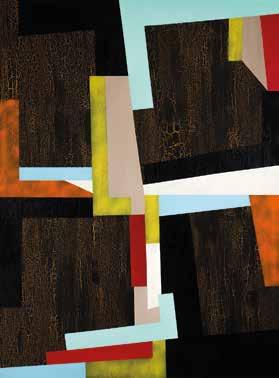

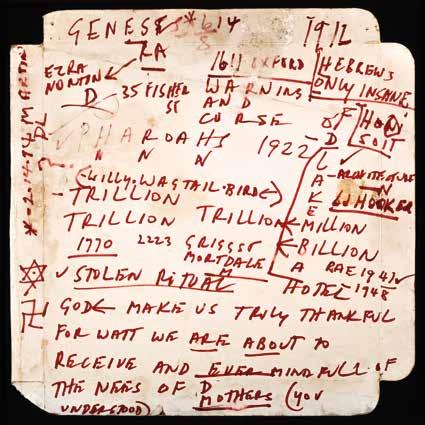

































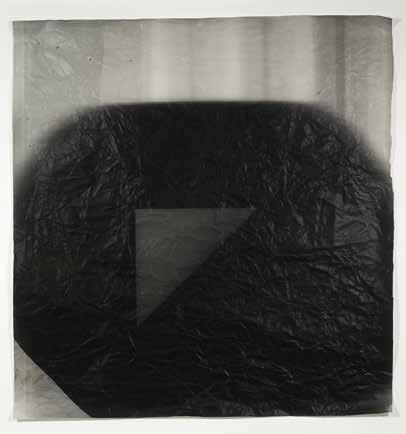






98 Arnold Newman (USA, 1918–2006), Picasso in his Studio, Vallauris, France, 1954, gelatin silver print (printed 1976), signed with photographer’s stamp, copyright and inscribed Pablo Picasso – 1954 Reprinted 1976 verso, 195 x 140mm. Provenance: Purchased from Webb’s, Auckland, 23 July 2008, Lot No. 52. $2000 – $4000
99 Arnold Newman (USA, 1918–2006), Portrait of Man Ray, gelatin silver print, 1960, photographer’s copyright stamp applied verso, 170 x 120mm. $2000 – $4000
100 Arthur Leipzig (USA, 1918–2014), Divers, East River, gelatin silver print, image taken 1946 (printed later), signed and inscribed An Arthur Leipzig Photo, 378 Glen Avenue, Seacliff NY 11579 ; inscribed Cat No. 6263 on original on (v)iew.com, New York label affixed verso, 265 x 34mm. Provenance: Purchased in America, 2000. $4000 – $7000








106 Gavin Hipkins and Karl Fritsch, Der Tiefenglanz, silver gelatin print and cubic zirconia (1/1), title inscribed, signed and dated 2012 verso, 300 x 240mm. Exhibited: ‘Der Tiefenglanz: Deep Gloss – Karl Fritsch and Gavin Hipkins’, Aratoi: Wairarapa Museum of Art and History’, 22 March – 8 June 2025. $3000 – $5000
107 Gavin Hipkins and Karl Fritsch, Der Tiefenglanz (Dampflokomotive), silver gelatin print and cubic zirconia (1/1), title inscribed, signed and dated 2012 verso, 405 x 304mm. Exhibited: ‘Der Tiefenglanz: Deep Gloss – Karl Fritsch and Gavin Hipkins’, Aratoi: Wairarapa Museum of Art and History’, 22 March – 8 June 2025. $3500 – $5500
108 Gavin Hipkins and Karl Fritsch, Der Tiefenglanz (Dead Hare), silver gelatin print with 22 carat gold coin (1/1), title inscribed, signed by both artists and dated 2011 verso, 290 x 205mm. Exhibited: ‘Der Tiefenglanz: Deep Gloss – Karl Fritsch and Gavin Hipkins’, Aratoi: Wairarapa Museum of Art and History’, 22 March – 8 June 2025. $3000 – $5000













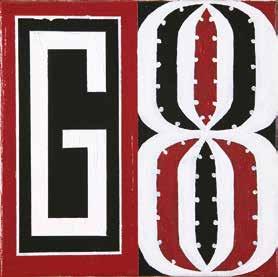






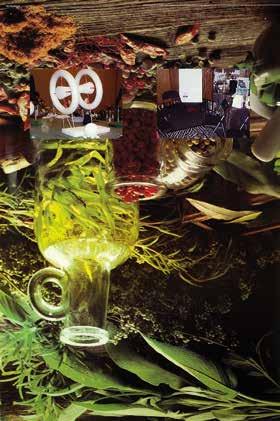
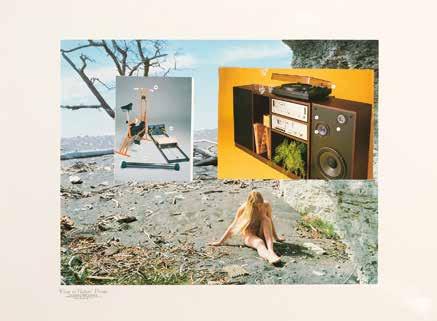









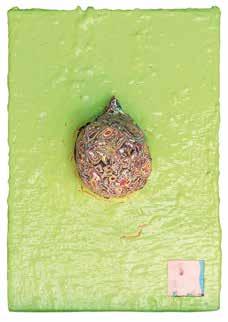












150 Edward Steichen (USA, 1879–1973), Moonrise, Mamaroneck, New York, 1904, Hand-printed, hand-pulled, dust-grain photogravure, from the portfolio ‘Edward Steichen: The Early Years 1900–1927’ (edition of 500), 250 x 310mm. Provenance: Purchased from the Aperture Foundation, New York, 2007. $1000 – $3000
151 Helmut Newton (Germany, 1920–2004), Fetish Figure, gelatin silver print, photographer’s stamp applied verso, 175 x 120mm. Provenance: Purchased from Webb’s, Auckland, 23 July 2008, Lot No. 41. $2000 – $3000
152 Paul Strand (USA, 1890–1976), The White Fence, Port Kent, New York, 1916, hand-pulled, dust-grained photogravure made from an original glass-plate negative, printed in 1991 by the Paul Strand Archive, Aperture Foundation, Inc., edition 298/300, accompanied by original Aperture Foundation certificate, 265 x 345mm. Provenance: Purchased from the Aperture Foundation, New York, 2007. $1500 – $2500














163 Peter Peryer, Ice Cream, pigment ink on Hahnemuhle photo-rag paper, 7/10, title inscribed, signed and dated 2007/2009 verso, 295 x 200mm. $2000 – $3000
164 Peter Peryer, Bulls, digital print, 8/15, title inscribed and dated 2006 verso, 55 x 80mm. $600 – $1000
165 Peter Peryer, Goat Head, gelatin silver print, 1/10, title inscribed, signed and dated 2008 verso; original Hamish McKay Gallery label affixed verso, 195 x 260mm. $2000 – $3000
166


















182
184











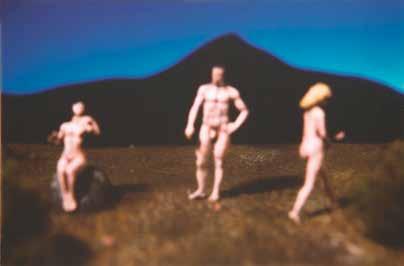
Please note: it is assumed that all bidders at auction have read and agreed to the conditions described on this page. Art+Object directors are available during the auction viewing to clarify any questions you may have.
1. REGISTRATION: Only registered bidders may bid at auction. You are required to complete a bidding card or absentee bidding form prior to the auction giving your correct name, address and telephone contact and supplementary information such as email addresses that you may wish to supply to Art+Object.
2. BIDDING: The highest bidder will be the purchaser subject to the auctioneer accepting the winning bid and any vendor’s reserve having been reached. The auctioneer has the right to refuse any bid. If this takes place or in the event of a dispute the auctioneer may call for bids at the previous lowest bid and proceed from this point. Bids advance at sums decreed by the auctioneer unless signaled otherwise by the auctioneer. No bids may be retracted. The auctioneer retains the right to bid on behalf of the vendor up to the reserve figure.
3. RESERVE: Lots are offered and sold subject to the vendor’s reserve price being met.
4. LOTS OFFERED AND SOLD AS DESCRIBED AND VIEWED: Art+Object makes all attempts to accurately describe and catalogue lots offered for sale. Notwithstanding this neither the vendor nor Art+Object accepts any liability for errors of description or faults and imperfections whether described in writing or verbally. This applies to questions of authenticity and quality of the item. Buyers are deemed to have inspected the item thoroughly and proceed on their own judgment. The act of bidding is agreed by the buyer to be an indication that they are satisfied on all counts regarding condition and authenticity.
5. BUYERS PREMIUM: The purchaser by bidding acknowledges their acceptance of a buyers premium of 19% + GST to be added to the hammer price in the event of a successful sale at auction.
6. ART+OBJECT IS AN AGENT FOR A VENDOR: A+O has the right to conduct the sale of an item on behalf of a vendor. This may include withdrawing an item from sale for any reason.
7. PAYMENT: Successful bidders are required to make full payment immediately post sale – being either the day of the sale or the following day. If for any reason payment is delayed then a 20% deposit is required immediately and the balance to 100% required within 3 working days of the sale date. We accept payment via Eftpos, cash (under $5000.00) and direct credit. Visa and MasterCard credit cards are accepted, however a surcharge of 2.5% will be added. Payments over $10 000.00 must be made by direct credit to our bank account. Our bank details for deposits are 12-3107-006293400. Please use your buyer number as transaction reference. Please refer to point 7 of the Conditions of Sale in the catalogue for a detailed description of payment terms.
8. FAILURE TO MAKE PAYMENT: If a purchaser fails to make payment as outlined in point 7 above Art+Object may without any advice to the purchaser exercise its right to: a) rescind or stop the sale, b) re offer the lot for sale to an underbidder or at auction. Art+Object reserves the right to pursue the purchaser for any difference in sale proceeds if this course of action is chosen, c) to pursue legal remedy for breach of contract.
9. COLLECTION OF GOODS: Purchased items are to be removed from Art+Object premises immediately after payment or clearance of cheques. Absentee bidders must make provision
for the uplifting of purchased items (see instructions on the facing page).
10. BIDDERS OBLIGATIONS: The act of bidding means all bidders acknowledge that they are personally responsible for payment if they are the successful bidder. This includes all registered absentee or telephone bidders. Bidders acting as an agent for a third party must obtain written authority from Art+Object and provide written instructions from any represented party and their express commitment to pay all funds relating to a successful bid by their nominated agent.
11. BIDS UNDER RESERVE & HIGHEST SUBJECT BIDS: When the highest bid is below the vendor’s reserve this work may be announced by the auctioneer as sold ‘subject to vendor’s authority’ or some similar phrase. The effect of this announcement is to signify that the highest bidder will be the purchaser at the bid price if the vendor accepts this price. If this highest bid is accepted then the purchaser has entered a contract to purchase the item at the bid price plus any relevant buyers premium.
The following information does not form part of the conditions of sale, however buyers, particularly first time bidders are recommended to read these notes.
A. BIDDING AT AUCTION: Please ensure your instructions to the auctioneer are clear and easily understood. It is well to understand that during a busy sale with multiple bidders the auctioneer may not be able to see all bids at all times. It is recommended that you raise your bidding number clearly and without hesitation. If your bid is made in error or you have misunderstood the bidding level please advise the auctioneer immediately of your error – prior to the hammer falling. Please note that if you have made a bid and the hammer has fallen and you are the highest bidder you have entered a binding contract to purchase an item at the bid price. New bidders in particular are advised to make themselves known to the sale auctioneer who will assist you with any questions about the conduct of the auction.
B. ABSENTEE BIDDING: Art+Object welcomes absentee bids once the necessary authority has been completed and lodged with Art+Object. A+O will do all it can to ensure bids are lodged on your behalf but accepts no liability for failure to carry out these bids. See the Absentee bidding form in this catalogue for information on lodging absentee bids. These are accepted up to 2 hours prior to the published auction commencement.
C. TELEPHONE BIDS: The same conditions apply to telephone bids. It is highly preferable to bid over a landline as the vagaries of cellphone connections may result in disappointment. You will be telephoned prior to your indicated lot arising in the catalogue order. If the phone is engaged or connection impossible the sale will proceed without your bidding. At times during an auction the bidding can be frenetic so you need to be sure you give clear instructions to the person executing your bids. The auctioneer will endeavour to cater to the requirements of phone bidders but cannot wait for a phone bid so your prompt participation is requested.
D. NEW ZEALAND DOLLARS: All estimates in this catalogue are in New Zealand dollars. The amount to be paid by successful bidders on the payment date is the New Zealand dollar amount stated on the purchaser invoice. Exchange rate variations are at the risk of the purchaser.
Auction No. 210 “a (im) possible relevance”: The Collection of Mal and Lizzie Brow Auction: 22–23 October 2025 at 6.00pm
This completed and signed form authorises Art+Object to bid on my behalf at the above mentioned auction for the following lots up to prices indicated below. These bids are to be executed at the lowest price levels possible.
I understand that if successful I will purchase the lot or lots at or below the prices listed on this form and the listed buyer s premium for this sale (19%) and GST on the buyers premium. I warrant also that I have read and understood and agree to comply with the conditions of sale as printed in the catalogue.
PAYMENT AND DELIVERY: Art+Object will advise me as soon as is practical that I am the successful bidder of the lot or lots described above.
I agree to pay immediately on receipt of this advice. Payment will be by Eftpos, cash (under $5000.00) or direct credit. I understand that there is a 2.5% surcharge for payment by Visa or MasterCard credit cards. I understand that payments over $10,000.00 must be made by direct credit to Art+Object’s bank account as shown on the invoice.
I will arrange for collection or dispatch of my purchases. If Art+Object is instructed by me to arrange for packing and dispatch of goods I agree to pay any costs incurred by Art+Object. Note: Art+Object requests that these shipping arrangements are made prior to the auction date to ensure prompt delivery processing.
Please indicate as appropriate by ticking the box:
FIRST NAME:
ADDRESS:
HOME PHONE:
BUS. PHONE: Signed as agreed:
PHONE BID
SURNAME:
MOBILE: EMAIL:
ABSENTEE BID
To register for Absentee or Phone Bidding this form must be lodged with Art+Object by 12pm on the day of the sale in one of three ways: 1. Email a printed, signed and scanned form to Art+Object: info@artandobject.co.nz
Fax a completed form to Art+Object: +64 9 354 4645
3. Post a form to Art+Object: PO Box 68345 Victoria Street West, Auckland 1142, New Zealand
Aberhart, Laurence 135, 136
Adams, Ansel 10
Akel, Anoushka 4,5
Armanious, Hany 65, 66, 67
Arps, Dan 128, 129, 130
Austin, Nick 55
Apple, Billy 30, 31, 185
Barber, Andrew 143
Bats, Ed 131, 132, 133, 134
Beck, Andrew 91, 92, 93, 94
Boyce, Roger 189, 190
Bram, Stephen 186
Buchanan, Ben 144, 145, 146
Budd, L. 27, 158, 159
Bush, Kushana 11, 12, 13
Campbell, Jon 17
Carr, Steve 160
Cartier Bresson, Henri 9
Cherry, Rob 181, 182
Cornille, Veronique 162
Cotton, Shane 2, 40, 84
Crothall, Grace 191
Culbert, Bill 119, 120
Dashper, Julian 1
Denny, Simon 56, 57 de Lautour, Tony 58, 59, 60, 61, 62, 63, 125, 126 Driver, Don 39, 149
et al. 157
Fomison, Tony 42
Friedlander, Marti 116, 117, 118
Fusinato, Marco 155
George, Darryn 122, 123 Georgetti, Diena 28, 29
Greig, Jason 77, 78, 147, 148
Griffin, Matt 179, 180
Hammond, Bill 32
Harrison, Michael 14, 15, 16, 192
Hartley-Scudder, Emily 167
Hellendoorn, Arie 187
Hipkins, Gavin 101, 102, 103, 104, 105, 106, 107, 108, 109, 110, 111
Hoon Lee, Jae 81
Hotere, Ralph 33
Intra, Giovanni 18, 19
Killeen, Richard 23
Lee, Adam 76, 113
Lee, Lindy 156
Leek, Saskia 51, 52, 53, 54
Leipzig, Arthur 100
Margaret Paul, Joanna 121
Maw, Liz 38
McCurry, Steve 154
McGregor, Laith 74, 75
McLeod, Andrew 6, 43, 44, 45, 46, 114, 115
Miller, Viv 170, 171 Mitchell, Sam 127
Morley-Hall, Andrew 193, 194
Newman, Arnold 98, 99 Newton, Helmut 151
Nixon, John 25, 26 Nolan, Rose 70
Pardington, Fiona 137, 138
Parekōwhai, Michael 20, 21, 22
Park, Suji 71, 72, 183, 184
Peryer, Peter 3, 79, 80, 163, 164, 165,166, 175, 176
Pick, Séraphine 85, 86, 87, 88, 89, 90, 112, 168, 169
Robinson, Peter 64
Ross, Andrew 95
Seliger, Mark 153
Shannon, Marie 173, 174
Shaw, Kate 188
Smither, Michael 41
Steichen, Edward 150
Stevenson, Michael 47
Strand, Paul 152
Swallow, Ricky 24
Taylor, Dane 177, 178
Taylor, Imogen 82, 83
Temin, Kathy 68, 69
Thomson, Elizabeth 172
Todd, Yvonne 161
Upritchard, Francis 34, 35, 36, 37
van der Ploeg, Jan 124
van Hout, Ronnie 195, 196
Walker, Jake 142
Ward Knox, John 7, 8, 141
Wealleans, Rohan 48, 49, 50, 139, 140
Westra, Ans 96, 97 Wilkinson, Brendon 73
22—23 October 2025

